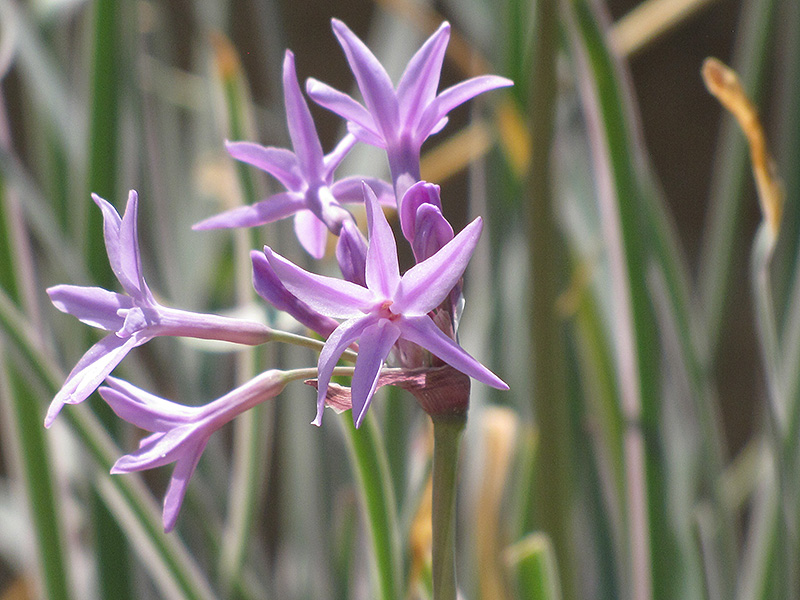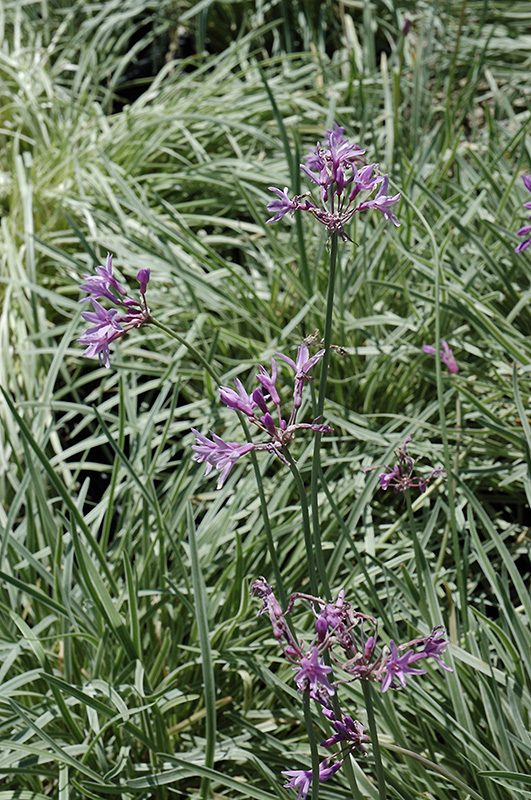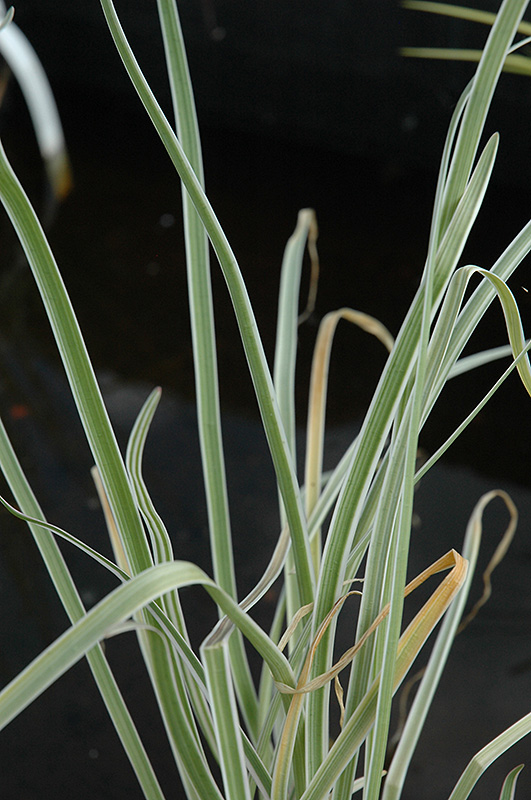>> Home
Variegated Society Garlic
Tulbaghia violacea 'Variegata'
Plant Height: 14 inches
Flower Height: 20 inches
Spacing: 16 inches
Sunlight:
![]()
![]()
Hardiness Zone: 6
Other Names: Striped Society Garlic
Description:
A very ornamental variety with variegated green and white foliage that has a garlic odor and can be used in salads and cooking; great for containers or as an accent plant for the water garden
Edible Qualities
Variegated Society Garlic is a perennial herb that is typically grown for its edible qualities, although it does have ornamental merits as well. The entire above-ground parts of the plant are edible, and are usually harvested from early to late summer. The edible parts have a mild taste and a distinctive fragrance.
The plant is most often used in the following ways:
- Fresh Eating
- Cooking
Features & Attributes
Variegated Society Garlic features showy spikes of violet star-shaped flowers with pink overtones rising above the foliage from mid spring to late summer. The flowers are excellent for cutting. Its attractive grassy leaves remain light green in color with prominent white stripes and tinges of silver throughout the season.
This is an herbaceous perennial herb with a mounded form. Its medium texture blends into the garden, but can always be balanced by a couple of finer or coarser plants for an effective composition. This is a relatively low maintenance plant, and should be cut back in late fall in preparation for winter. It has no significant negative characteristics.
Aside from its primary use as an edible, Variegated Society Garlic is sutiable for the following landscape applications;
- Mass Planting
- General Garden Use
- Herb Gardens
Planting & Growing
Variegated Society Garlic will grow to be about 14 inches tall at maturity extending to 20 inches tall with the flowers, with a spread of 20 inches. When grown in masses or used as a bedding plant, individual plants should be spaced approximately 16 inches apart. It grows at a medium rate, and under ideal conditions can be expected to live for approximately 10 years. As an herbaceous perennial, this plant will usually die back to the crown each winter, and will regrow from the base each spring. Be careful not to disturb the crown in late winter when it may not be readily seen!
This plant is quite ornamental as well as edible, and is as much at home in a landscape or flower garden as it is in a designated herb garden. It does best in full sun to partial shade. It prefers to grow in moist to wet soil, and will even tolerate some standing water. It may require supplemental watering during periods of drought or extended heat. It is not particular as to soil type or pH. It is somewhat tolerant of urban pollution. This is a selected variety of a species not originally from North America. It can be propagated by division; however, as a cultivated variety, be aware that it may be subject to certain restrictions or prohibitions on propagation.


